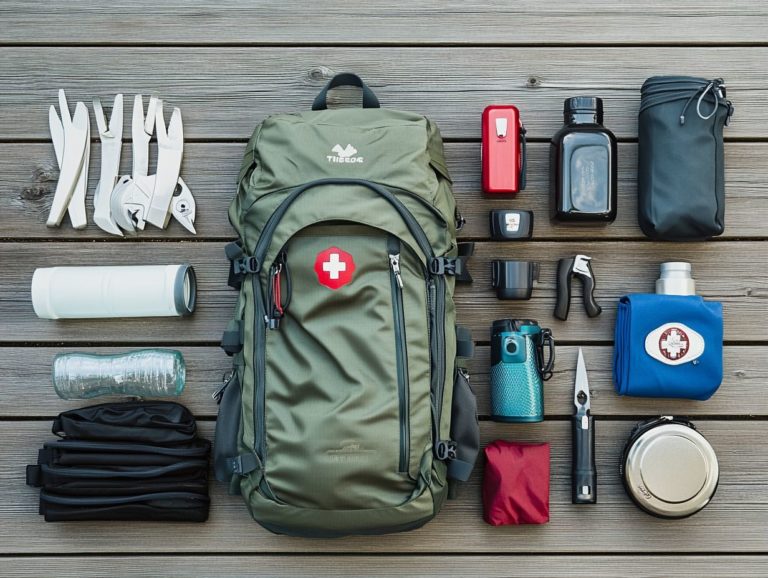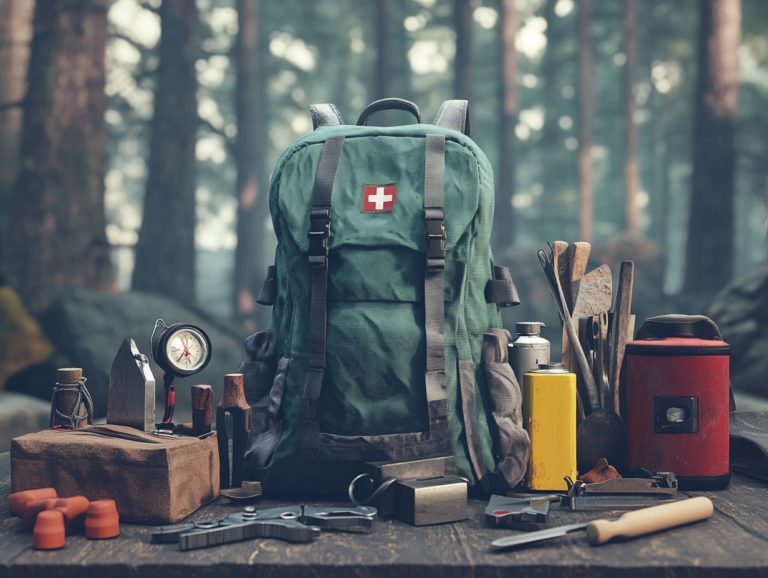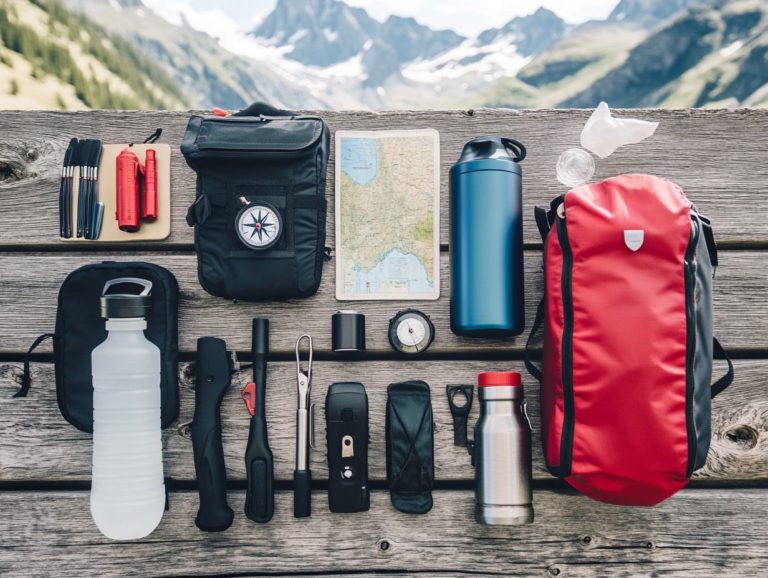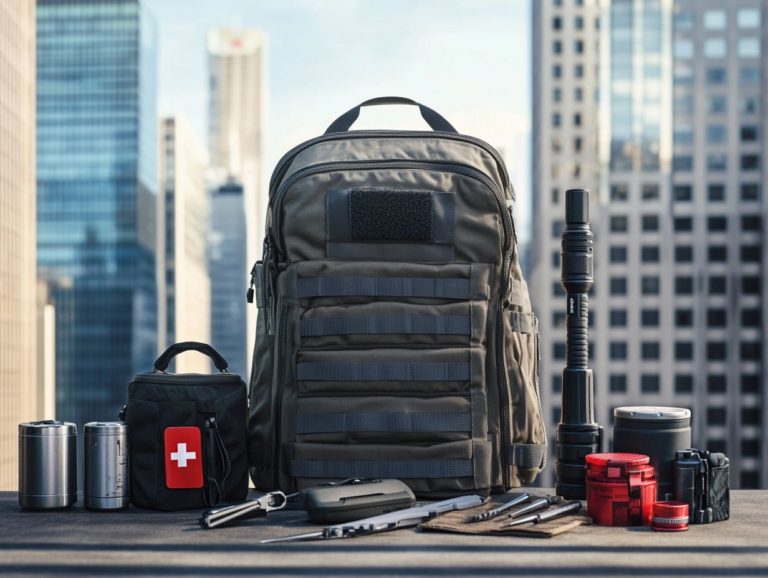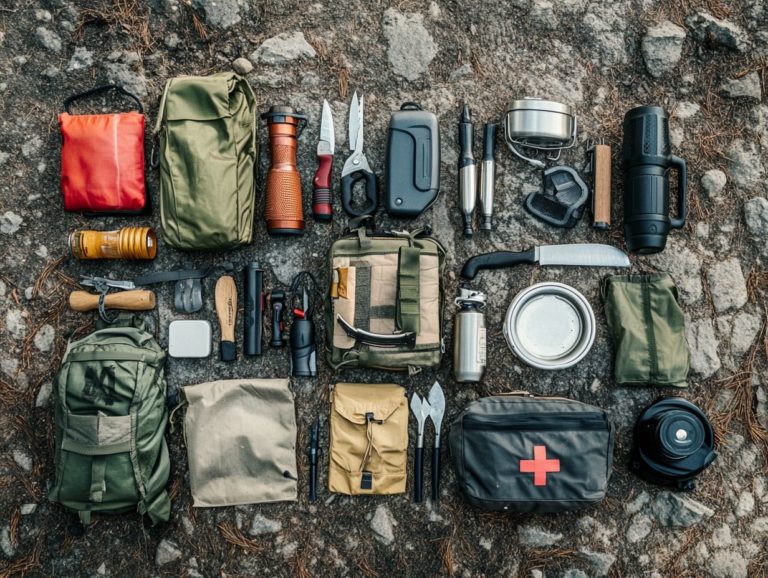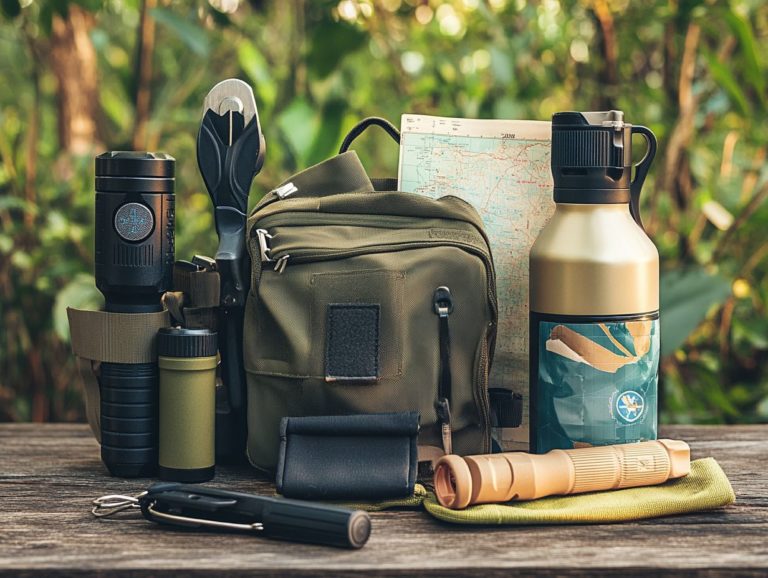Essential Skills to Use with Your Survival Gear
In a world where the unexpected can strike without warning, mastering survival skills becomes essential. Whether you re an outdoor enthusiast or simply wish to be ready for emergencies, knowing how to navigate, build shelter, start a fire, source clean water, and procure food can dramatically change your experience.
This article delves into the essential survival skills that perfectly complement your gear, offering practical techniques and insights to help you thrive in the wild. Equip yourself with the knowledge that could not only save your life but also elevate your outdoor adventures to new heights!
Contents
- Key Takeaways:
- Navigation Skills
- Shelter Building Skills
- Fire Starting Skills
- Essential Wilderness Survival Skills
- Water Sourcing and Purification Skills
- Food Procurement Skills
- Frequently Asked Questions
- What are some essential skills to use with my survival gear?
- Why is it important to have these skills when using survival gear?
- How can I improve my fire starting skills?
- What materials can I use to build a shelter?
- What are some important things to consider when navigating in the wilderness?
- What should I do if I get lost while using my survival gear?
Key Takeaways:
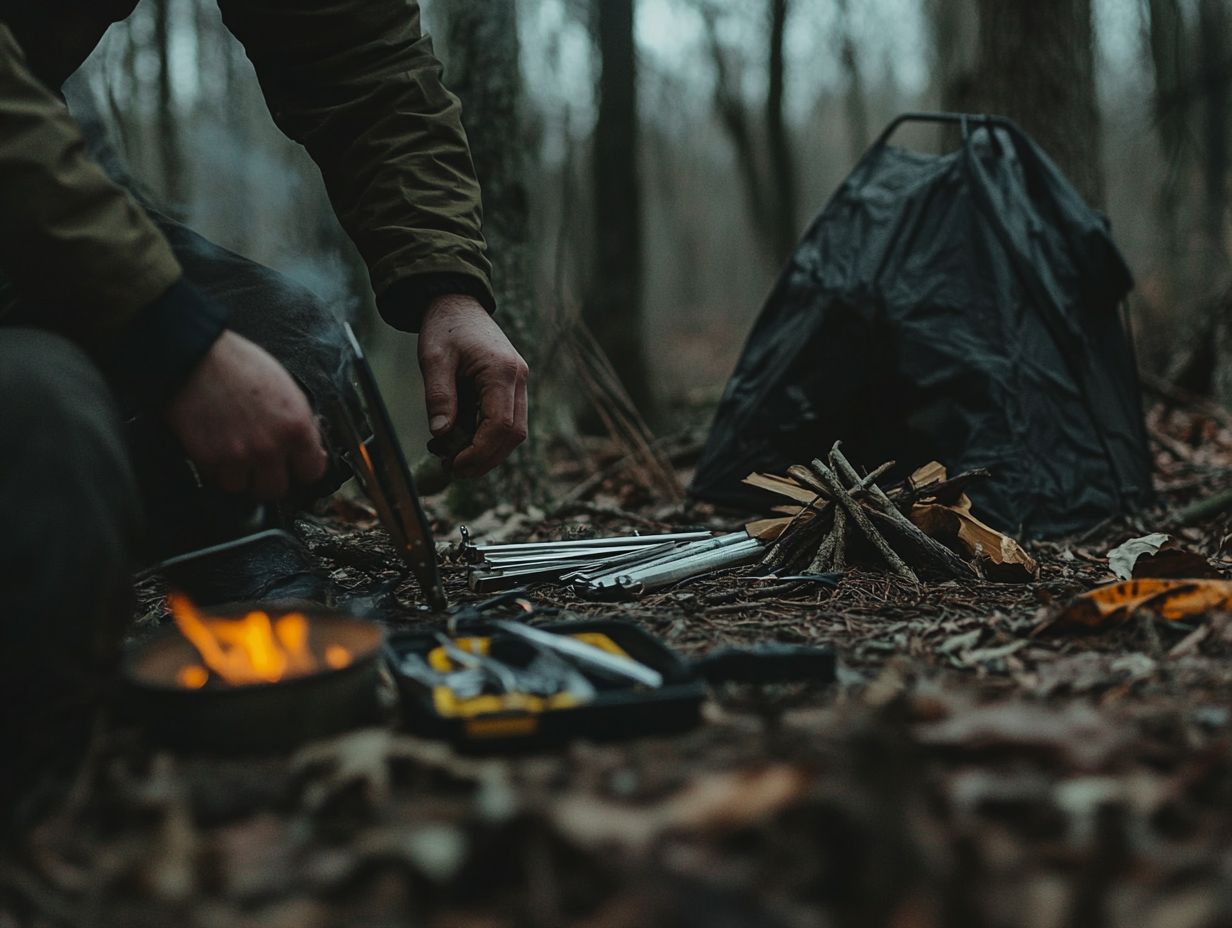
- Always carry a map and compass to navigate through unfamiliar terrain.
- Master the art of shelter building using natural materials to protect yourself from the elements.
- Know how to safely start a fire and purify water for survival in the wild.
Why are Survival Skills Important?
Survival skills are critical for finding your way in the wild. They give you the power to manage your resources effectively and ensure your safety when faced with adversity.
Acquiring these abilities transcends mere physical prowess. It fosters a profound sense of self-sufficiency that can significantly enhance your confidence in unfamiliar environments.
With these essential techniques, you ll be ready for anything! Techniques such as navigation, water purification, and first aid help you mitigate risks and make informed decisions.
Being mentally ready helps you stay calm and think clearly in emergencies. In moments of crisis, this preparedness is paramount.
Possessing first aid knowledge not only prepares you to address injuries but also nurtures a proactive mindset that prioritizes health and safety. This mindset can be crucial when facing challenges in the wild.
Navigation skills are essential for successfully exploring the wilderness. They enable you to find your way while managing your time and resources in unfamiliar settings.
Mastering the map and compass is fundamental to honing these skills, as it gives you the power to accurately determine your location and devise safe routes through challenging terrains.
Learning to read topographical maps offers invaluable insights into elevation changes, water sources, and potential hazards. These maps are a critical asset for any backcountry enthusiast.
Using a Map and Compass
Using a map and compass effectively is an essential navigation skill. It gives you the power to orient yourself in the wilderness and reach your desired destinations safely.
This duo of tools helps you identify locations and provides insight into the terrain, which is crucial for anyone venturing into remote areas.
To effectively use a map, start by familiarizing yourself with its symbols and scale. They convey valuable information about your environment.
When taking bearings with a compass, it’s vital to align the device with the map to establish a clear path and accurately determine your direction.
Mastering these techniques will ensure that even in unfamiliar landscapes, you can confidently navigate your surroundings while elevating your overall wilderness experience.
Reading Topographical Maps
Reading topographical maps is a critical skill for wilderness navigation. These maps equip you with intricate details about land features, elevations, and terrain types.
Understanding contour lines is paramount. They reveal elevation changes and indicate the steepness or flatness of the land.
When these lines are closely spaced, you can expect a steep slope, while wider spacing suggests a more gradual incline.
Various symbols on these maps denote significant landmarks like rivers, trails, and forested areas. By accurately interpreting these elements, you can determine the optimal paths to take, sidestep potential obstacles, and ensure a safer journey through the rugged wilderness.
Shelter Building Skills
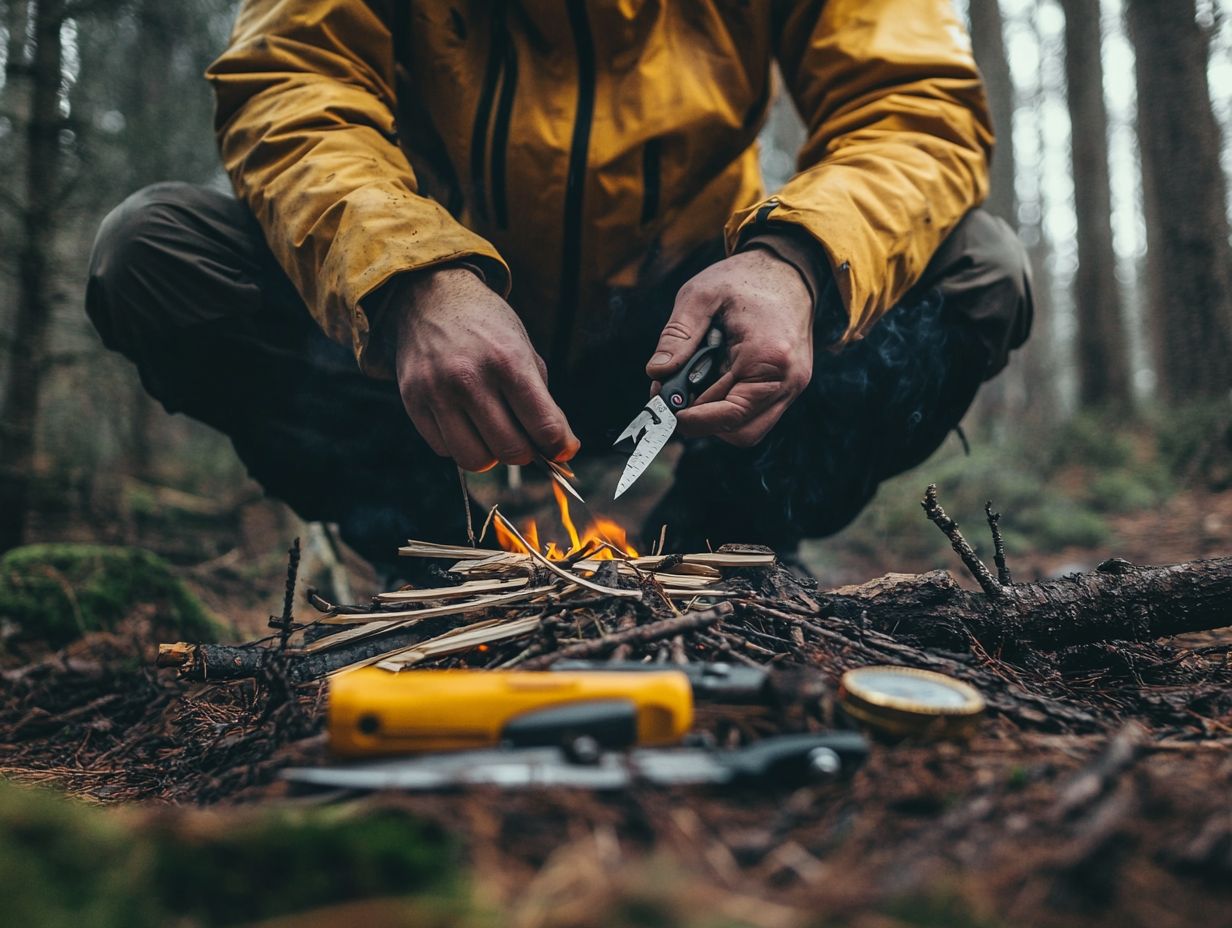
Shelter-building skills are vital for survival in the wilderness. They protect you from harsh weather and help maintain your body temperature.
Mastering the art of constructing a secure and effective shelter can truly be the difference between life and death in a survival scenario.
You can use various techniques to create a lean-to or other shelter forms. These structures provide adequate defense against the elements.
Understanding the principles of shelter construction is essential for anyone daring to venture into the backcountry.
Types of Shelters
In the wilderness, you can build several types of shelters. Each one offers unique protection and comfort based on the resources you have and the conditions you encounter.
Among these options, lean-to structures are a quick fix. They can be easily assembled while shielding against prevailing winds, especially when rain starts pouring.
On the flip side, debris huts excel in warmth and insulation. They are critical in colder climates, though they require more time and materials to construct.
Tents, whether portable or traditional, offer convenience and ease of setup. However, be cautious without proper anchoring, they can be susceptible to strong winds.
By exploring these various shelter options, you empower yourself to choose the most effective solution for your specific circumstances, greatly enhancing your chances of survival in the wilderness.
Materials and Techniques
The choice of materials and techniques in shelter construction is crucial. They ensure your shelter’s durability and effectiveness in wilderness survival situations.
A well-constructed shelter can greatly enhance your chances of surviving harsh weather conditions and other environmental challenges.
Use natural materials like leaves, branches, and mud for insulation and to provide the structural integrity your shelter needs.
For instance, a debris hut with a sturdy frame made from branches and layered thickly with leaves and pine needles can effectively trap warmth.
Incorporating mud as adobe for the walls adds weight for stability and helps withstand rain.
Proper assembly techniques, such as using crossing support beams for extra strength, ensure that your shelters can resist the elements while being built quickly and efficiently.
This maximizes your survival opportunities in the wild.
Fire Starting Skills
Fire-starting skills are essential for wilderness survival. They offer warmth, protection, and the ability to cook food and purify water.
By mastering fire ignition techniques, you significantly increase your chances of thriving in the great outdoors.
Understanding various fire maintenance strategies is crucial. Gathering firewood sustains your fire during your time in the backcountry.
Learning to manage a fire effectively also offers psychological benefits, instilling a sense of safety and comfort amidst the challenges of nature.
Methods for Starting a Fire
There are several effective methods for starting a fire in wilderness survival situations. Each method is tailored to the unique environmental conditions and resources at your disposal.
You might choose the traditional bow drill technique, which requires patience and practice, or opt for the quick sparks generated by flint and steel.
Each method offers distinct advantages, crucial depending on your circumstances.
Using natural tinder like dried leaves, grasses, or birch bark can significantly boost your chances of successfully igniting a flame.
It’s essential to keep critical safety considerations in mind, such as ensuring proper ventilation and avoiding flammable surroundings. The importance of this cannot be overstated.
Mastering these fundamental skills equips you with vital survival knowledge and instills a sense of confidence in your ability to navigate and thrive in the wild.
Essential Wilderness Survival Skills
In wilderness survival, mastering essential skills can mean the difference between life and death.
Safety Precautions
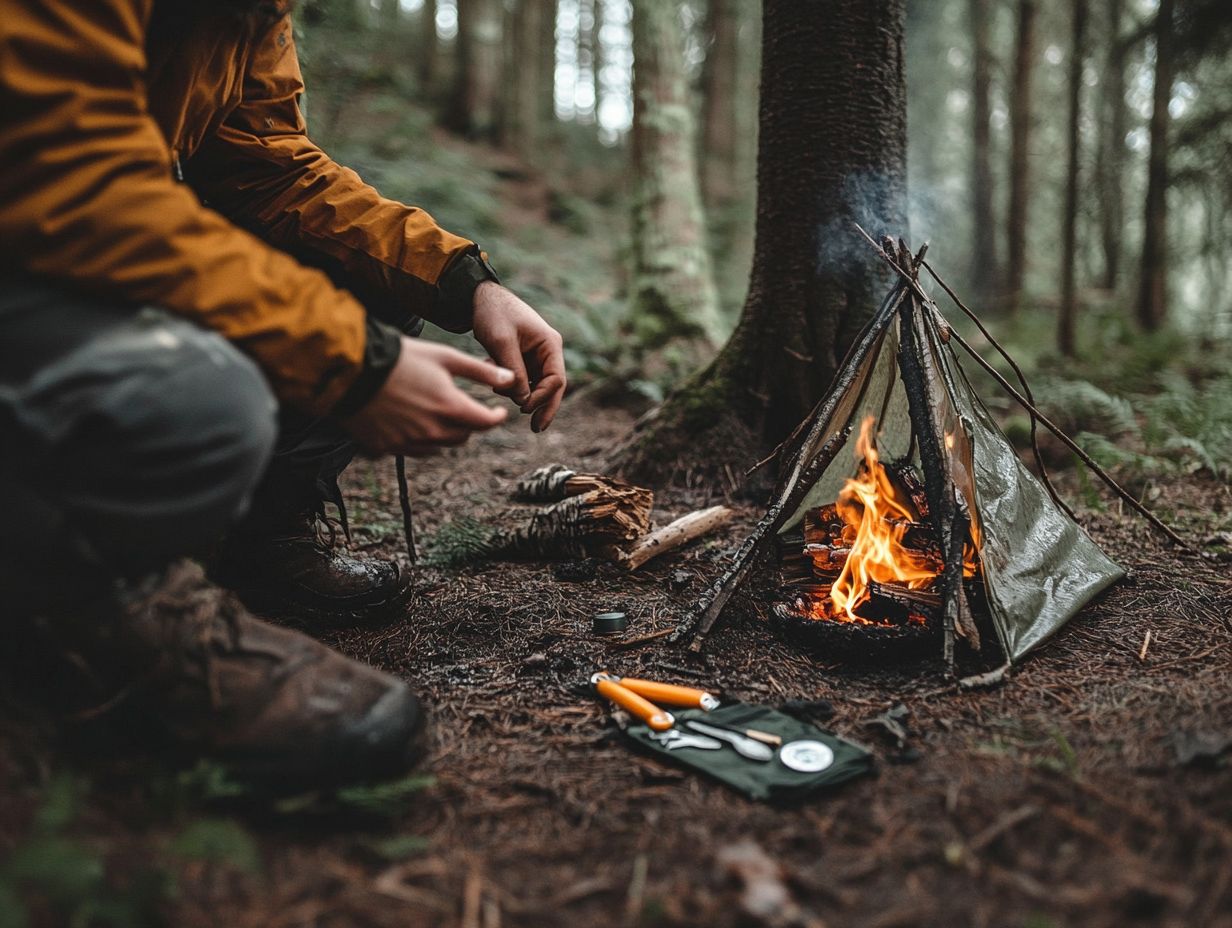
Ensuring safety precautions when starting and maintaining a fire in the wilderness is crucial for preventing accidents and safeguarding the natural environment.
Begin by identifying a suitable fire location one that s clear of flammable debris and overhanging branches. This is your first step toward effective fire management.
Controlling the size of the flame is vital; it can mean the difference between a cozy evening under the stars and an uncontrollable inferno.
When it is time to extinguish your fire, use proper techniques. Douse it with water or cover it with dirt to minimize the risk of rekindling.
Understanding these essential measures not only enhances your personal safety but also reflects a responsible approach to wilderness survival, showcasing your respect for nature s delicate balance.
Water Sourcing and Purification Skills
Water sourcing and purification skills are critical for your survival in the wilderness, where access to clean drinking water can mean the difference between life and death.
Knowing how to locate reliable places to find water be it from streams, ponds, or even rainfall forms the bedrock of effective water procurement.
Master various ways to clean water, such as boiling and filtration, to ensure that the water you consume is safe and free from harmful substances.
Skills like building shelter and gathering firewood are also important for overall survival.
This essential knowledge is critical for anyone eager to venture into the backcountry.
Finding and Treating Water in the Wild
Finding and treating water in the wild is a crucial aspect of wilderness survival, as staying hydrated is vital for both your physical health and mental sharpness.
Recognizing various methods for locating water sources can significantly boost your chances of survival. Pay attention to your natural surroundings; searching for animal tracks or specific plant life can often lead you to water.
Streams and rivers typically indicate a reliable supply, while areas abundant in lush vegetation may suggest nearby moisture.
Once you identify a water source, the next critical step is purification, which is essential for eliminating harmful pathogens.
Natural filtration techniques using layers of sand, charcoal, and gravel in a container can effectively clean the water.
Alternatively, chemical treatments like iodine tablets or chlorine drops offer quick and dependable options, ensuring you have access to safe hydration.
Mastering these skills is essential for anyone venturing into the wilderness!
Food Procurement Skills
Food procurement skills are crucial for your survival in the wilderness, providing you with the knowledge and techniques needed to locate and secure sustenance in challenging environments.
By mastering both hunting and gathering techniques, including backcountry hunting, you can adopt a more versatile approach to food acquisition, significantly boosting your chances of finding adequate nutrition.
Familiarizing yourself with safe edible plants and learning how to employ basic cooking methods can greatly enhance your ability to thrive in any survival situation.
It’s also important to consider how to gather food while ensuring it aligns with your overall food procurement strategy.
Hunting and Gathering Techniques
Hunting and gathering techniques are essential for food procurement in the wilderness. They provide you with the tools to secure essential food for survival.
These skills include a range of methods. You can set traps and snares for small game or identify and harvest edible plants that flourish in their natural habitats.
Mastering the art of trapping means understanding animal behavior and selecting the right locations. Foraging demands a keen eye and solid knowledge of local flora.
By combining these techniques, you significantly boost your chances of maintaining a balanced diet in the wild. Merging the precision of hunting with the abundance of foraging allows you to build a strong plan for wilderness survival.
Incorporate a signaling mirror into your gear to assist in emergencies.
Frequently Asked Questions
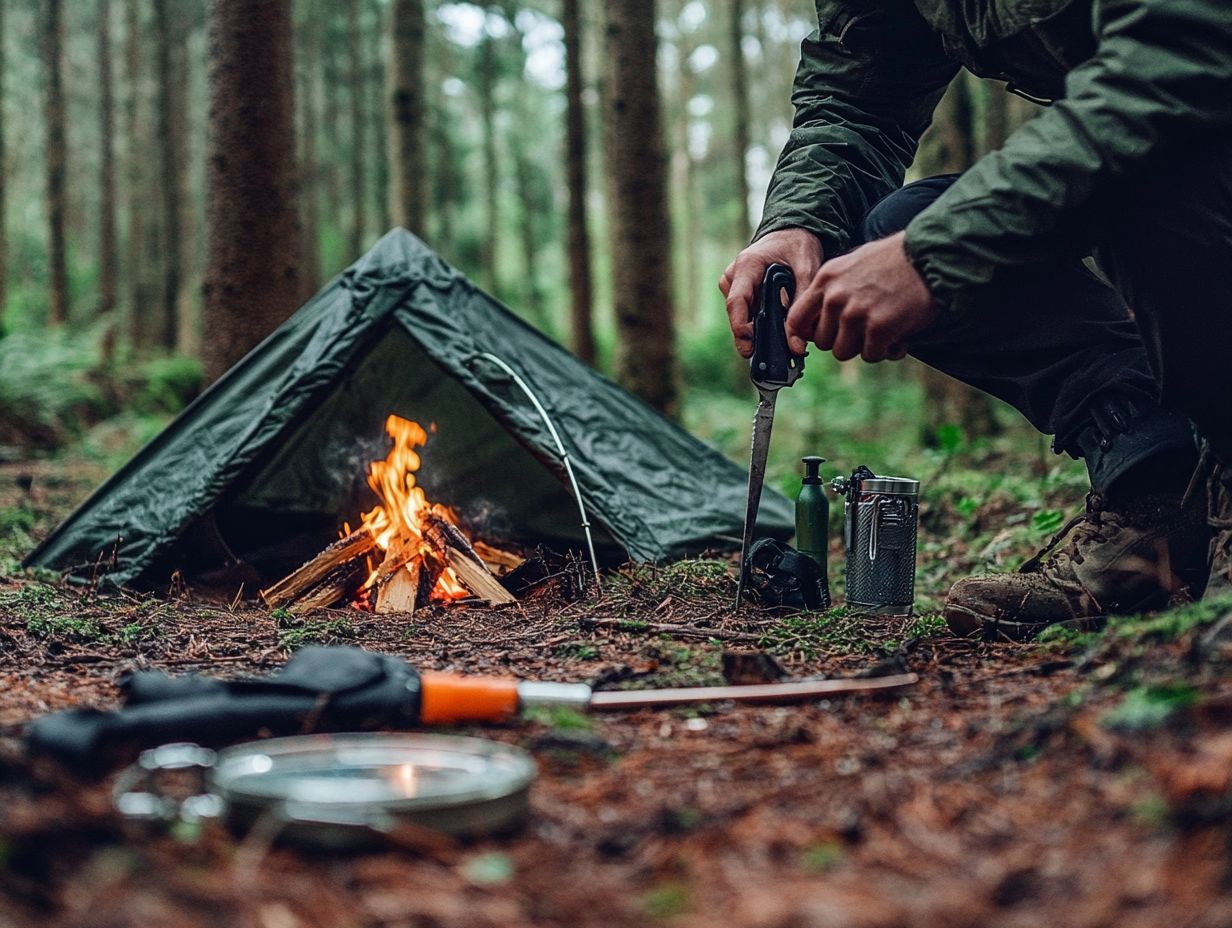
What are some essential skills to use with my survival gear?
Some essential skills include fire starting, building shelter, and navigation.
Why is it important to have these skills when using survival gear?
These skills are crucial for survival and can dramatically improve your chances of rescue in a survival situation.
How can I improve my fire starting skills?
Practice using different fire starting methods, such as matches, lighters, and flint and steel. Ensure you have dry tinder and kindling available, along with tools for gathering firewood.
What materials can I use to build a shelter?
You can use natural materials like branches, leaves, and vines. Alternatively, use your survival gear, such as a tarp or emergency blanket, to create a protective shelter.
Always carry a map and compass, and learn how to read them. Pay attention to landmarks, terrain features, and the surrounding mountain landscape for effective navigation.
What should I do if I get lost while using my survival gear?
The first thing you should do is stay calm and assess your surroundings. Use your navigation skills to determine your location, and if necessary, use your gear to signal for help.

